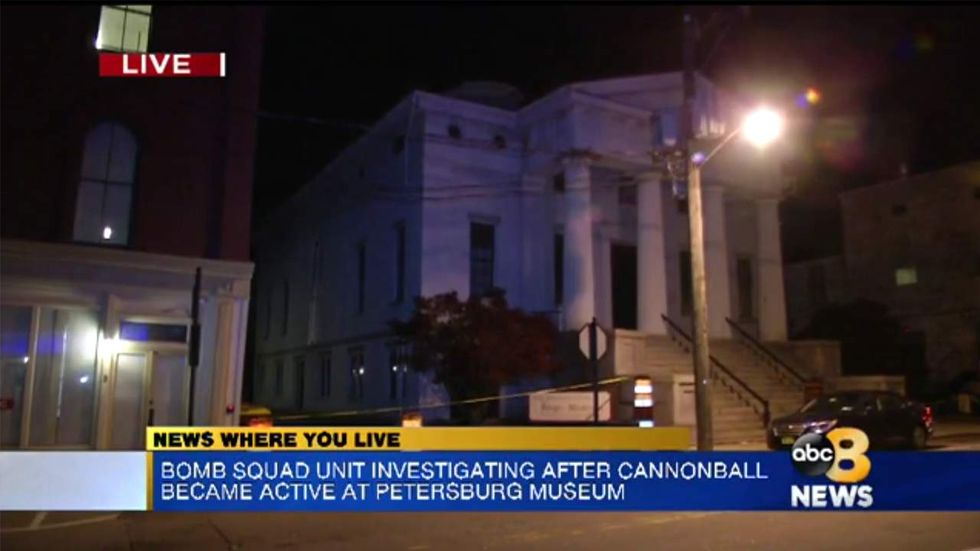
Siege Museum in Petersburg, Virginia. (Image source: WSET-TV)

A Civil War museum in Petersburg, Virginia, called local police on Tuesday after discovering several dozen cannon balls hidden away in storage that museum officials believed could be live.
A bomb squad for the Virginia State Police arrived at Virginia’s Siege Museum later that day and verified using X-ray technology four of the cannon balls were still active. The Associated Press reports a military bomb squad was asked by the state police to remove the cannon balls from the museum.
Reports confirm the military bomb squad successfully disposed of two cannon balls and two Parrott artillery shells on Wednesday.
A spokesperson for the city said the cannon balls and artillery rounds did not have fuses and would not have exploded without having been lit, according to the Associated Press.
The Siege Museum commemorates a nine-month battle between Ulysses S. Grant’s Union troops and Robert E. Lee’s Confederate Army at Petersburg during the Civil War. The National Park Service has declared the Siege of Petersburg the “longest military event of the Civil War.”
According to NPS, the Siege of Petersburg, which lasted from June 1864 to March 1865, was essentially one long battle consisting mostly of trench warfare. More than 70,000 soldiers died in the battle for Petersburg, a crucial hub for the Confederacy and its capital, Richmond, Virginia. Just six days after Grant successfully cut off the supply lines at Petersburg, which he was able to accomplish using trenches that stretched 30 miles, Lee surrendered.
[graphiq id="8CeMiN7nKyp" title="American Civil War" width="500" height="500" url="https://w.graphiq.com/w/8CeMiN7nKyp"]
The Siege Museum seeks to show visitors how the people of Petersburg lived before, during, and after the Civil War, according to AP. It had been closed for more than 18 months before reopening this week. Workers tasked with getting the museum prepared for visitors discovered the cannon balls in the museum’s storage area on Tuesday.
The museum believes the cannon balls have been in the museum for about 70 years.
Justin Haskins